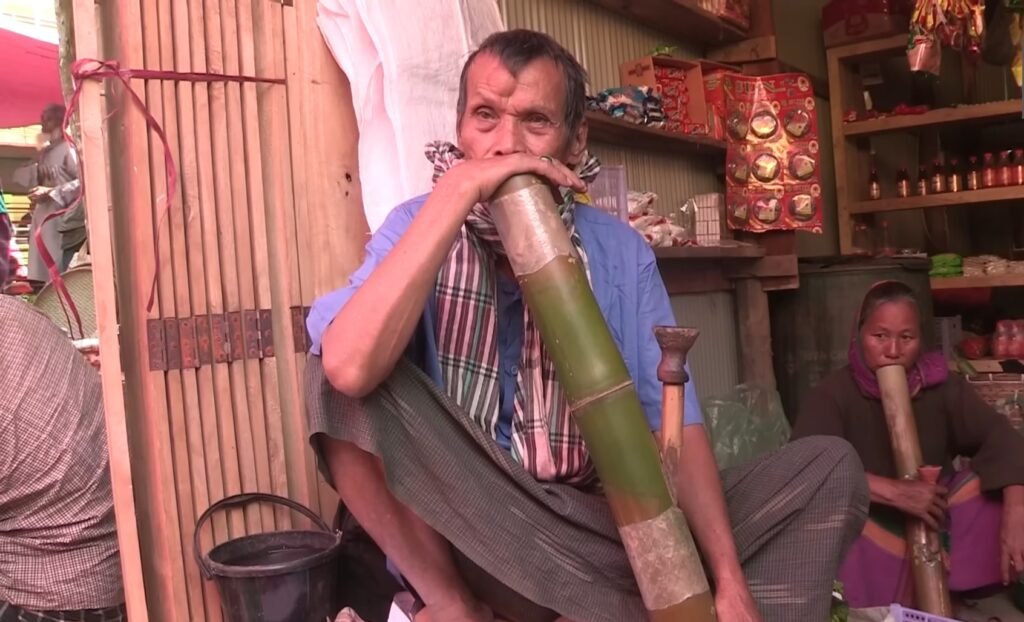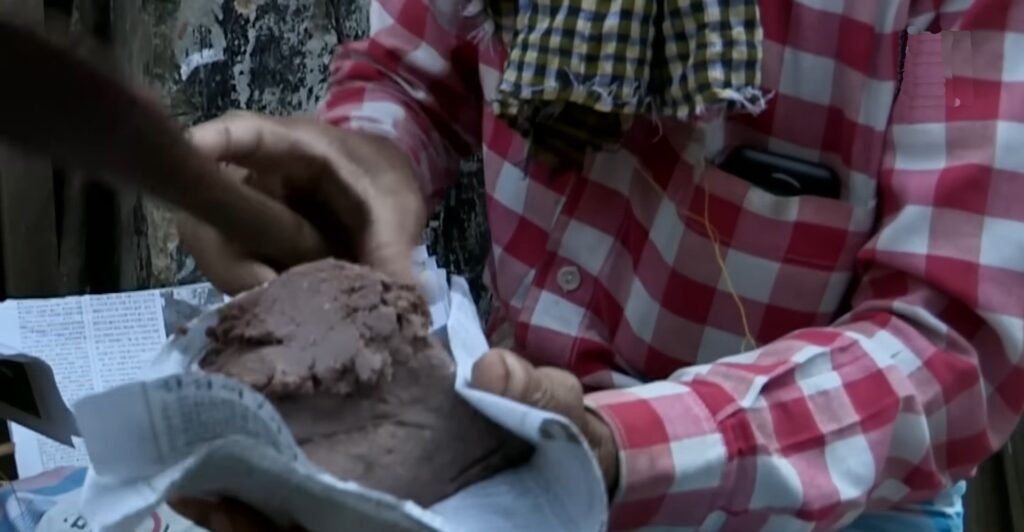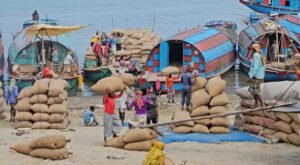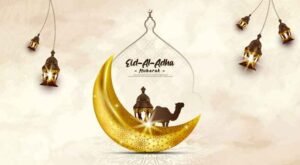Ashuganj’s Century-Old Rice Market Home / BOC Ghat sits about...
Read MoreRangamati: The Vibrant Hill Market in Winter
With the arrival of winter, Rangamati’s hill markets become even more lively and captivating. Alongside the stunning landscapes, the markets offer an array of seasonal fruits, fresh vegetables, indigenous spices, and exquisite handicrafts.
Rangamati: The Vibrant Hill Market in Winter
Nestled in the southeastern corner of Bangladesh, Rangamati is a colorful region of the Chittagong Hill Tracts, where the breathtaking Kaptai Lake flows like the lifeline of the land.
With the arrival of winter, Rangamati’s hill markets become even more lively and captivating. Alongside the stunning landscapes, the markets offer an array of seasonal fruits, fresh vegetables, indigenous spices, and exquisite handicrafts. People from various ethnic communities, including Marma, Chakma, and Tripura, bring their traditional goods, adding a unique cultural essence to the marketplace.
Crossing the waters of Kaptai Lake early in the morning—do you know where I am heading? To Shuvolong Bazaar. Today is market day. Shuvolong Bazaar comes alive early in the morning. Dear reader, today you are my companion in this mountain market.
Shuvolong Bazaar is about 25 kilometers northeast of Rangamati Sadar, located in Barkal Upazila and accessible by boat. Hot tea, a serene morning, the sleepy charm of the lake, and the call of the market—all make this Kaptai Lake journey wonderful. Mountains in front, behind, and all around. This lake rests at the feet of the hills, as if nature’s artist has crafted it with deep affection.
Shuvolong Bazaar has come to life along the shores of the lake. Boats filled with various goods crowd the dock of Shuvolong Bazaar. Many refer to Shuvolong as the “Vietnam of Bangladesh.”
The boats are overflowing with goods, and the lively hustle of buying and selling fills the air. In Shuvolong Bazaar, trade happens in two ways—retail sales take place inside the market, while wholesale transactions occur at the dock.
Most of the vegetables, fruits, and leafy greens grown in the surrounding hills are brought here by indigenous people from near and far. The majority of sellers are hill people, while most buyers are Bengali wholesalers. Despite being a remote area, this dock is always bustling, as it serves as a key communication hub for five upazilas of Rangamati. The waterways make transporting goods convenient and efficient.
Shuvolong Bazaar has come to life along the shores of the lake. Boats filled with various goods crowd the dock of Shuvolong Bazaar. Many refer to Shuvolong as the “Vietnam of Bangladesh.”
The boats are overflowing with goods, and the lively hustle of buying and selling fills the air. In Shuvolong Bazaar, trade happens in two ways—retail sales take place inside the market, while wholesale transactions occur at the dock.
Most of the vegetables, fruits, and leafy greens grown in the surrounding hills are brought here by indigenous people from near and far. The majority of sellers are hill people, while most buyers are Bengali wholesalers. Despite being a remote area, this dock is always bustling, as it serves as a key communication hub for five upazilas of Rangamati. The waterways make transporting goods convenient and efficient.

The prices of goods are also low, attracting wholesalers from far and wide. For the marginalized hill people, Shuvolong Bazaar is not just a marketplace but a capital of trade. The dockside market is quite spacious and open, while the adjacent main market is more compact and crowded.
I spotted a hill woman carrying a large basket full of long, thick potatoes—something rarely seen in the plains. The hill people call it “Kath Alu” or “Thenga Alu,” while Bengalis refer to it as “Shimool Alu.” In English, it is known as cassava, with the scientific name manihot esculenta. There were also black-speckled hill beans, known locally as “Khaissa,” while Bengalis call them “Khesari.” Additionally, the market offers snails and shelled mollusks, which are a rich source of protein for the hill people.
Since this is a tribal market, it offers a diverse range of products like snails and mollusks. Most of the bottle gourd leaves in this market come from Jhum cultivation.
Various types of leafy greens and vegetables are mostly grown on the hillsides. Some call it Jha Shim, while others refer to it as Gira Shim—sold both with and without stems. The locally grown hill vegetables are incredibly fresh and completely free from adulteration.
When you visit the market, your attention will be drawn to the bamboo-made Daba, a traditional hookah. The bamboo-made smoking device is called a hookah or shisha. In some local contexts, it can also be referred to as a Daba in Bengali.
The market’s restaurants are filled with mountain dwellers. The hill people cannot afford to come to the market without eating. Curious to learn about the mystery behind the restaurant’s charm, I ended up engaging in lively conversations with the locals. Food and gossip are two things that the mountain people absolutely love.
Dry fish (Shutki) is a favorite delicacy among the hill tribes. People from this region, including the hill Bengalis, absolutely love eating dry fish. They enjoy various kinds such as Loitta, Faisha, Khuri, Chingri, Mola, Kachki, and many others. Have you ever tried shark dry fish? You can find shark dry fish here!
There is a diverse collection of hand-made shoes by the hill tribes. There are also colorful threads for weaving fabrics. Most of the tribal families have the tradition of weaving their own clothes with these threads on their looms. Not only are there threads for weaving clothes, but you can also find woven fabrics, traditional clothing, and various textile items in this market.
Traditional items such as Pinnon Hadi, Rinai Richa, Thami, Fatuwa, Shal, Kombol, Maplar, Papos, bags, and more are all handmade or woven in the tribal style. The locals buy them based on their needs, and you can also purchase them. Nearby, there’s a display of jewelry and accessories. Girls of all ages from indigenous communities love to adorn themselves with these beautiful pieces.
In the plains, Bengalis prefer large betel leaves, whereas the hill tribes favor smaller ones. Unlike the bigger ones, the smaller betel leaves are sold by weight, and though they are just two to three inches long, they are sweet in taste. Along with betel leaves, dry tobacco leaves from the tobacco plant are sold. The tobacco plant has two main uses in the hills.
One part is used to make Zorda and Nass (snuff), while the rest is used by those who enjoy smoking hookah. Due to reduced production, tobacco is now more expensive. The Shubhlong market has a weekly market that takes place every Friday. Most of the indigenous people in the hills love spicy food, which is why both raw and dried chilies are in high demand and supply here.

Not only vegetables, fruits, and crops, but seeds are also sold here. Various household tools such as spades, axes, and sickles are also available. The famous Nappi is highly favored by the hill tribes. There is no comparison when it comes to enhancing the flavor of vegetables with Nappi, and the hill tribes cannot imagine their cooking without it.
The bamboo basket carried on the back is called Kallong by the Chakma, Tabang by the Tipra, and Poring by the Marma. Bamboo-made items are an essential part of their daily life.
A market is a vibrant mix of various products and people. The diversity at the Shubhlong market in the hilly region of Rangamati will surely captivate your heart. So, come and explore Rangamati. Dear readers, I hope we will meet again to explore another unique market of Bangladesh soon.
The Culture of Eid al-Adha in Bangladesh
The Culture of Eid al-Adha in Bangladesh Eid al-Adha is...
Read MoreFishing Trawler Made in Bangladesh
Home / Fishing Trawler Made in Bangladesh About 10 kilometers...
Read MoreTop 7 Wonders of Bangladesh | 7 Wonders of the World
Home / Top 7 Wonders of Bangladesh Do you know...
Read More


